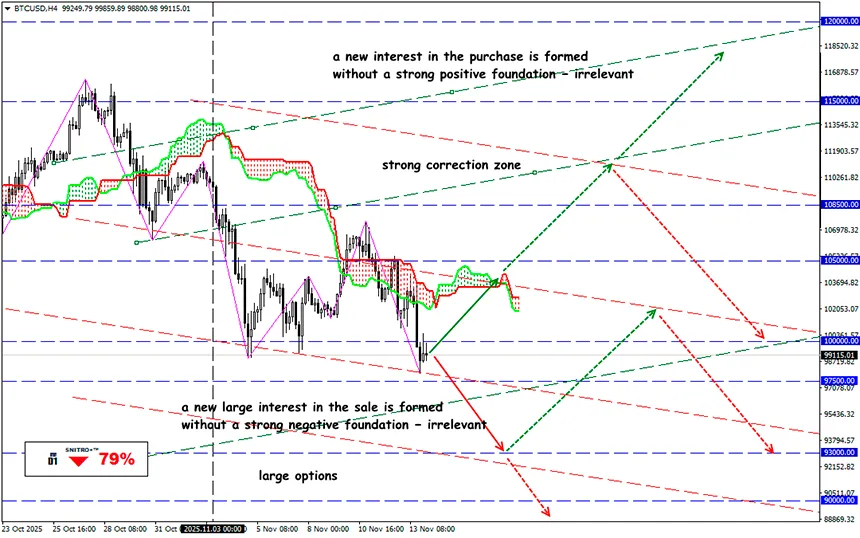How Much Forty Days of Chaos Cost

How the Crypto Market Survived the Shutdown
BTC/USD
Key zone: 97,500 - 100,000
Buy: 100,000 (on strong positive fundamentals) ; target 102,500-103,500; StopLoss 99,000
Sell: 97,000 (on a pullback after retesting the 100,000 level) ; target 95,500-95,000; StopLoss 98,000
America has ended the longest shutdown in modern history — for six weeks the country functioned without a fully operating government. This was not only a crash test for the U.S. economy but also the first serious trial for AI technologies and digital assets.
Recall: the political paralysis began on October 1, 2025, when the U.S. Congress failed the budget vote and rejected all temporary funding options. More than 750,000 federal employees were placed on forced leave, and funding for government programs and contracts was suspended.
Crypto became one of the first victims: the SEC froze dozens of filings, including new ETFs for Ethereum and Solana. This was an alarming signal for an industry that has been desperately seeking institutional recognition.
Throughout October, crypto-market liquidity steadily declined. According to CryptoQuant, the average daily inflow into BTC ETFs fell threefold. Major players chose a wait-and-see mode, fearing new political surprises.
But the real catastrophe erupted overnight from October 10 to 11:
- Within minutes, crypto-market capitalization fell by $600 billion.
- Futures liquidations exceeded $19 billion.
- BTC fell below $100,000 for the first time in six months.
Such a flash crash coincided with a new political blow: Trump announced 100% tariffs on Chinese imports, and global markets responded with mass sell-offs across all asset classes. Crypto, as always, reacted first — and most painfully.
When Congress finally reached a compromise, the market revived instantly. Within hours of the truce between Democrats and Republicans:
- Total market capitalization rose 4.3% to $3.57 trillion,
- Bitcoin gained over 4%,
- Ethereum +5.8% (amid record-low fees of 0.067 gwei),
- Solana +5.7%,
- XRP nearly +8%,
- Even DeFi tokens — usually the worst hit in macro shocks — recovered part of their losses.
However, this growth was not speculative but stabilizing.
After the October crash, traders avoided aggressive positioning, and funds postponed launching new projects. There is no euphoria: trading volumes remain sluggish, and institutional flows into ETFs are only beginning to recover.
But the market gained something more important — a sense of reality.
The 2025 shutdown demonstrated the crypto market’s vulnerability to politics: when state regulators fall silent, digital assets lose their point of reference. Now crypto-market stability directly depends on trust in the very institutions it was once created to resist.
Bitcoin is no longer a hedge against political risks — it has become part of the global financial system, reacting to crises with the precision of a stock index.
What comes next?
With the restoration of U.S. government operations, analysts expect capital inflows into ETFs and derivatives to return gradually starting in December.
For the first time, the digital-asset market has endured a global political malfunction not as an outsider but as a full-fledged component of the financial ecosystem.
If a shutdown happens again (for example, in January 2026), the crypto market will already know how to survive such chaos — and perhaps even profit from it.
So we act wisely and avoid unnecessary risks.
Profits to y’all!








